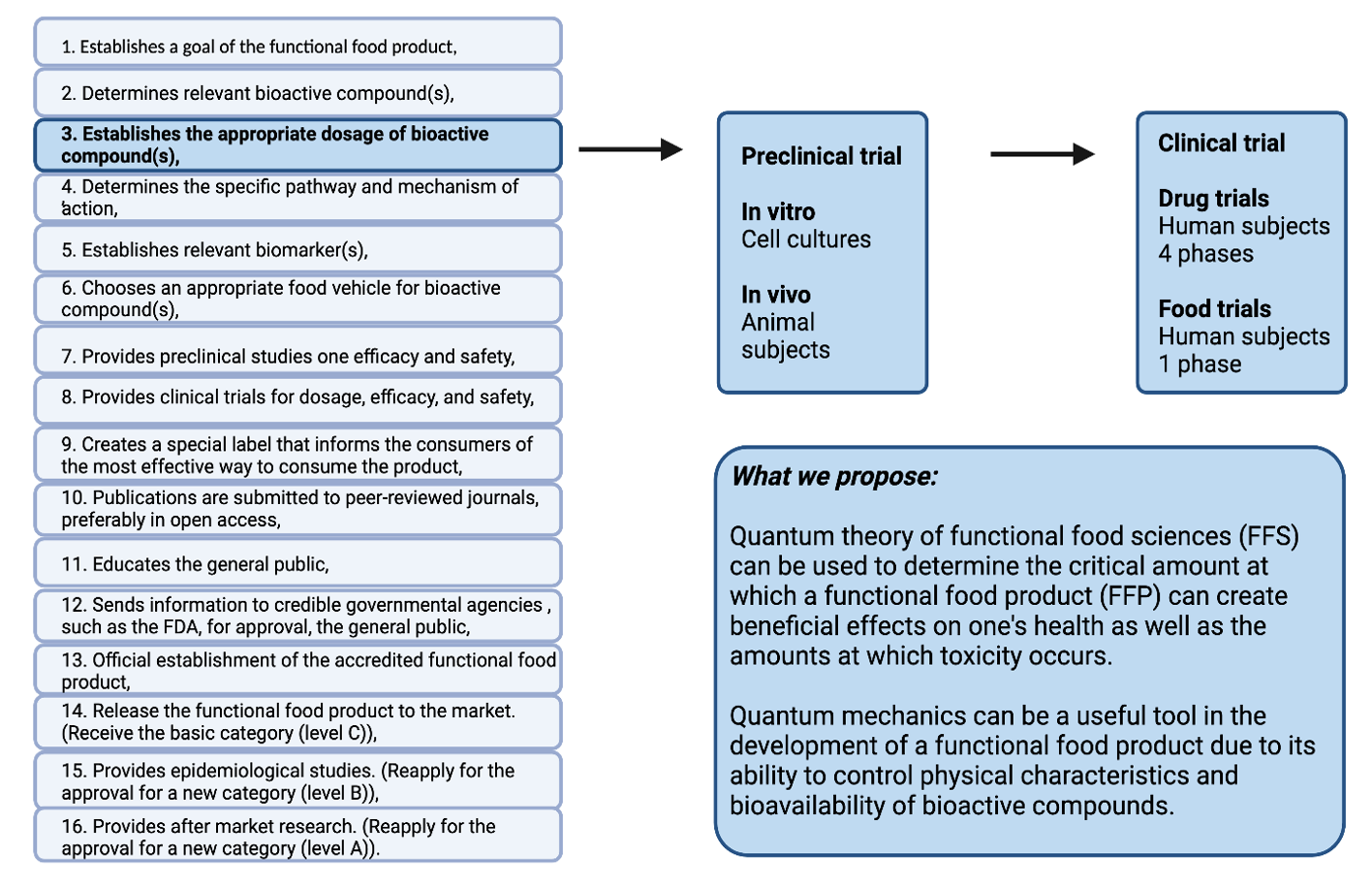Quantum Theory of Functional Food Science: Establishment of dosage of bioactive compounds in functional food products
DOI:
https://doi.org/10.31989/ffs.v2i3.915Abstract
ABSTRACT
As the prevalence of chronic diseases has increased in the United States there has also been an increase in the need for products that can help prevent, manage, or treat diseases. Functional food products can do this through components within them called bioactive compounds. These compounds can provide multiple health benefits that act on biomarkers of disease. However, there is not a set definition for functional foods, making it hard to classify and regulate them. The Functional Food Center has proposed a definition for functional food as well as a multi-step process for their development. As part of this process a bioactive compound is identified within a functional food product. To understand more about the safety and efficacy of this bioactive compound, an appropriate dose must be established. To find this dose, clinical research is conducted. In preclinical research animal subjects are used to identify the critical amount of a bioactive compound. Researchers also test for safety concerns and adverse effects from the product. After this, clinical trials are performed on human subjects to determine the efficacy of the functional food product. However, these trials are different from trials done on drugs. The quantum theory of functional food science can find the critical amount of a bioactive compound needed to create a chain reaction that leads to the claimed health benefits. This can also help researchers discover possible toxicities of bioactive compounds in doses above the critical amount. The use of quantum mechanics in the food industry could also allow for control of physical characteristics of functional food products as well as bioavailability of bioactive compounds within these products using nanotechnology. However, more research is needed to understand the safety of this technology.

Keywords: functional food products, bioactive compounds, dosage, pre-clinical studies, clinical studies, quantum theory of functional food sciences, quantum mechanics
Downloads
Published
Issue
Section
License
Any manuscripts or substantial parts of it, submitted to the journal must not be under consideration by or previously published in any other journal or citable form. Authors are required to ensure that no material submitted as part of a manuscript infringes existing copyrights or the rights of a third party. In submitting one's article in any form, the author has assigned the FFC publishing rights and has agreed to an automatic transfer of the copyright to the publisher. This is so that the FFC may create print option journals, for example, at the FFC’s discretion. If the author wishes to distribute their works by means outside of the FFC, for example within their community, they will have to place a request.
Correspondence concerning articles published in Functional Foods in Health and Disease is encouraged. While derivative works (adaptations, extensions on the current work, etc.) are allowed, distribution of the modified material is not allowed without permission from the FFC.